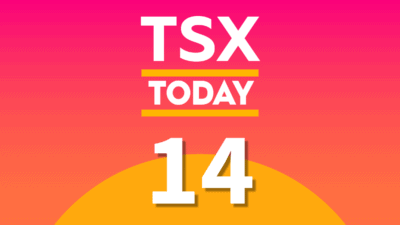A bad reputation is hard to shake. This has been proven time and time again, in the stock market as well as in life in general. And I believe this is the reason for the fact that CIBC (TSX:CM)(NYSE:CM) is trading at a P/E ratio that is far below that of TD’s (TSX:TD)(NYSE:TD), Royal Bank’s (TSX:RY)(NYSE:RY), and Bank of Nova Scotia’s (TSX:BNS)(NYSE:BNS).
Is CIBC’s negative reputation deserved, or is the stock about to get re-rated by the market?
Why the discount?
Some things are hard to forget. In the 2000s, CIBC was on very shaky grounds. In those years, the company made aggressive and risky business decisions that resulted in big financial losses and of course a big loss of confidence amongst investors.
More recently, however, things have changed at CIBC. The company has been hard at work lowering its risk profile and changing its culture in order to generate more sustainable and less volatile returns for shareholders. CIBC has since become a well-capitalized bank that is focused on its Canadian operations.
The bank has clearly shed its risk taking past, and is determined to grow in a prudent and risk averse manner. We can see evidence of this new culture at CIBC in its Tier 1 Capital Ratio, a measure of financial strength that has led the pack in this last year.
In its Retail and Business Banking segment, which represents the bulk of its earnings, CIBC is heavily focused on Canada. That could be a good thing or a bad thing, depending on your perspective. On the one hand, venturing out internationally, especially in the less developed countries, brings a higher growth profile to a bank. On the other hand, it is wrought with risks.
Conventional wisdom has shown us that not expanding internationally is a negative because the real growth in banking happens in the international markets, and it offers good diversification. Bank of Nova Scotia and TD Bank have long been applauded for their efforts and success in diversifying into international markets. And they have undoubtedly done a superb job at it.
Number-crunching
But what if CIBC being more focused domestically is a good thing? Looking at recent financial results of the banks, one cannot help but notice that CIBC is performing exceptionally well compared to its peers. The first quarter of fiscal 2014 saw CIBC outperforming its peers on many measures.
Its ROE was once again ahead of the pack, as it has been for many quarters now. CIBC achieved an ROE of 22.1%, compared to 16.2% at TD, 15.4% at Bank of Nova Scotia, and 18.1% at Royal Bank. Furthermore, CIBC saw the strongest growth in the first quarter, with EPS increasing 9%, compared to 6% at TD, 6.5% at Bank of Nova Scotia, and 3% at Royal Bank.
Since one of the legacy worries and hard to shake labels about CIBC is its propensity to take risk, let’s also look at its Tier 1 capital ratio. It also ranks well, as it currently comparatively high, at 11.5% versus 10.5% at TD.
CIBC’s dividend yield and valuation also rank highly. It’s dividend yield is currently 4.1%, compared to 3.6% at TD, 4% at BNS, and 3.9% at Royal Bank. And of course, CIBC is still in the penalty box, and so its P/E multiple is a mere 10.3 times, versus 14.4 times for TD, 12.4 times for BNS, and 13.1 times for Royal Bank.
Foolish bottom line
CIBC has been consistently demonstrating good business practices, good risk management, and good results to show for it. Yet the stock is still trading at a sizable discount to its peers. Given the company’s performance of late, and direction for the future, investors have good reason to believe that this gap will narrow in the coming year.
 Stock Up Sale
Stock Up Sale







